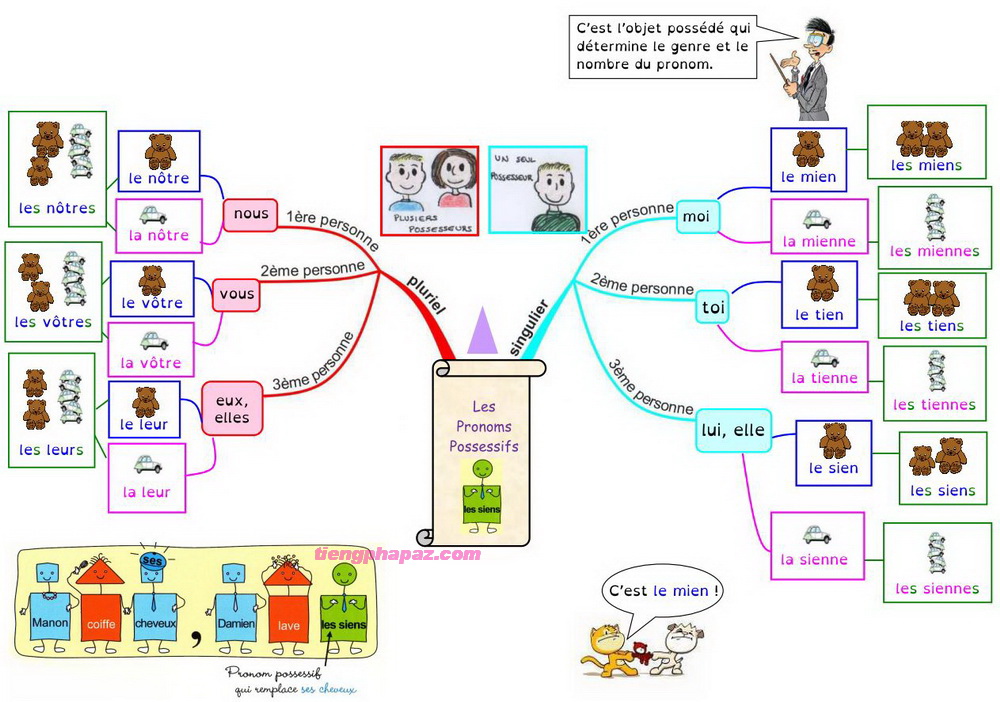Possessive pronoun
In English communication, the use of possessive pronouns is very frequent. However, many students are still confused and confused between possessive pronouns and possessive adjectives. Let EnglishTopVN help you solve this problem
1. Concepts
Possessive pronounare pronouns to indicate possession.

Listening to the definition above, it may be a bit difficult to understand. We just need to look at the following example to understand better:
- His car is expensive. Mine is cheap.
Possessive pronouns include words mine, yours, his, hers, ours, theirs.
✎ NOTE: its is also a possessive pronoun but is extremely rarely used.
2. For position
-
Subject
-
object
-
Comes after a preposition (in a prepositional phrase)
For example:
-
Subject: His car is expensive. Mine is cheap.
-
Object: He bought his car two years ago. I bought mine one month ago.
-
Comes after the preposition: I could deal with his problem easily but I don't know what to do with mine.

3. Distinguish between possessive adjectives and possessive pronouns
We need to pay attention to the distinction Possessive Adjectives (Possessive Determiners) and Possessive pronoun as follows:
- Possessive adjectives must ALWAYS modifies a noun after it.
- After the possessive pronoun ta ARE NOT Use more nouns because it itself acts as a noun phrase.
Let's look at the following examples to understand the above difference.
For example:
- My car is blue. His car is red.
My and his Here is the possessive adjective, because my is modifying the noun car and his is modifying the noun car. - My car is blue. His is red.
In this sentence his is a possessive pronoun. His here is referring to his car, his car.
 \
\

